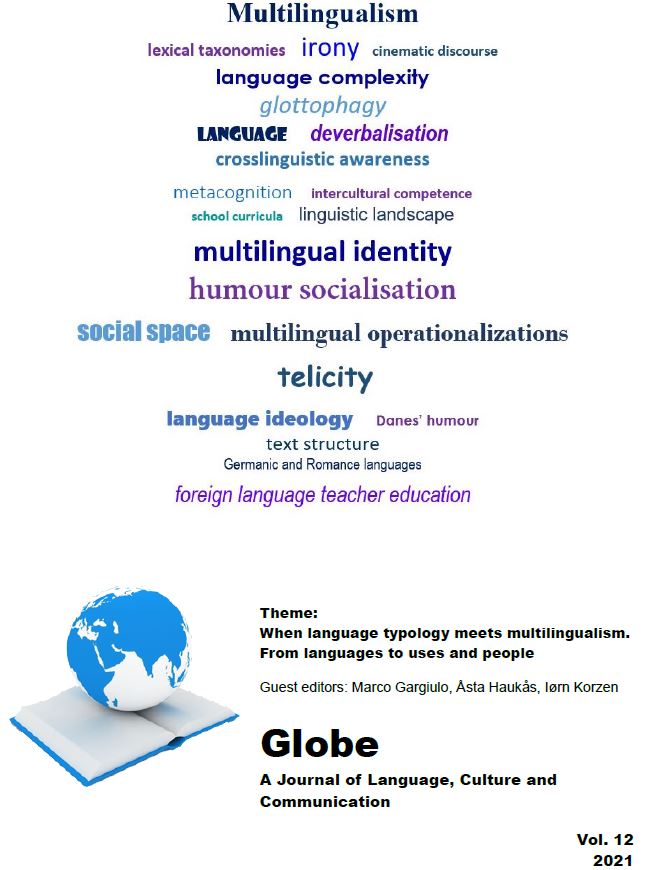Language conflict, glottophagy and camouflage in the Italian cinematic city
DOI:
https://doi.org/10.5278/ojs.globe.v12i.6502Resumé
In this paper, I would like to present an analysis of the social environment of language contact in Italy exploring how historically the language policy in the era of fascism produced a complex idea of the Italian language community. I will use the notions of spatiality, glottophagy and camouflage to indicate, describe and analyse how this came to be and still is the case, and I will try to contextualize this process in the fascist history of Italy. In the second part, I will focus on the relationship between language, space and society as represented in Italian cinema, unpacking the relationships between fascism and Italian language policy and the language structured by socioeconomic and cultural conflicts. Discussing the language structure in three cinematic cases, I want to demonstrate how Italian cinema has interpreted the relationship between different languages and conflict in the repertoire in the moment when social conflict started to be filmed by some film directors at the end of the Second World War.
Downloads
Publiceret
Nummer
Sektion
Licens
Articles published in Globe: A Journal of Language, Culture and Communication are following the license Creative Commons Attribution-NonCommercial-NoDerivs 3.0 Unported (CC BY-NC-ND 3.0). Authors retain copyright and grant the journal right of first publication with the work simultaneously licensed under a Creative Commons Attribution License: Attribution - NonCommercial - NoDerivs (by-nc-nd). Further information about Creative Commons


